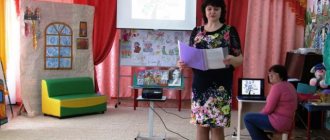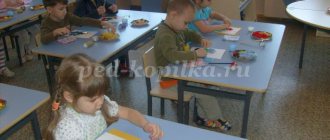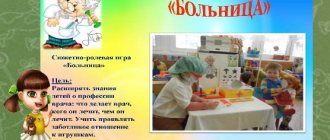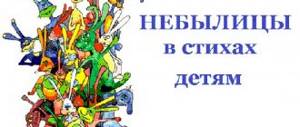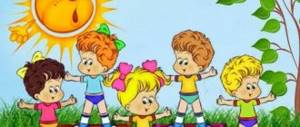A collection of children's tongue twisters for speech development, improving diction and entertainment. You need to read tongue twisters from childhood, because reading tongue twisters and memorizing them helps to form beautiful, smooth speech, they teach you to pronounce all the letters without skipping them or “swallowing them.”
Tongue twisters for children on this page are divided into several categories. The most important tongue twisters for improving diction are, of course, “with the letter P” and sibilant consonants. Reading complex tongue twisters will help you consolidate your skills, and funny children's tongue twisters will help you learn while playing.
Tongue twisters with hissing sounds
Tongue twisters with hissing sounds are the most popular tongue twisters for children based on complex hissing consonants.
Tongue twister starting with the letter Z
The bear cub was frightened, Hedgehog with the hedgehog and the hedgehog, Swift with the swift and the little haircut.
Tongue twister starting with the letter H
Four turtles have four baby turtles.
Tongue twister starting with the letter Sh
Old talkative women live in a hut at the edge of the forest. Every old lady has a basket, There is a cat in every basket, Cats in baskets sew boots for old ladies.
Sewn by Sasha
Sasha sewed a hat for Sashka, Sashka knocked off a bump with his hat.
Sasha was walking along the highway
Sasha walked along the highway and sucked on a dryer.
In the hut
In the hut the yellow dervish from Algeria rustles with silks and, juggling with knives, eats figs.
Cuckoo in the hood
Cuckoo bought a hood. Put on the cuckoo's hood. How funny he is in the hood!
Tongue twister starting with the letter Ш
Two puppies, cheek to cheek, nipping at the brush in the corner.
Tongue twisters by age
The child begins to make the first sounds already one and a half months after birth. By six months, “humming” turns into a complex of sounds like “agu”, “aha”, “ata”.
The period of babbling, when the baby repeats the simple syllables “ata-ta-ta”, “pa-pa”, “va-va-va” after adults, takes from six months to 11-12 months.
Up to 2 years of age, children master all vowel sounds and a number of consonants (bilabial and prelingual):
- m;
- n;
- P;
- T;
- d;
- l;
- n.
By the age of 3, when all baby teeth have already erupted, children begin to pronounce hissing and labiodental sounds:
- V;
- f;
- and;
- h;
- w;
- h.
Only after this does it make sense to start pronunciation classes in a playful way.
From 3 to 4 years old, the child softens the consonant sounds: shabaka (dog), dem (house). In addition, it allows for hissing and whistling sounds: mika (bear), chaka (cup), loka (spoon). This is the norm, and you should contact a speech therapist only if the trend continues by age 6.
From 5 to 6 years old, these sounds are already clearly distinguished in children's speech. They are replaced by the problem of replacing [p] with [l] or [j]. This is also considered a physiological norm. There is no need to worry and contact speech pathologists with such a problem until the end of the first grade. It is enough to captivate a preschooler with pure words and onomatopoeia with this consonant at the base.
The help of a speech therapist should be sought if the child pronounces sounds that are not in their native language. For example, [p] throat or [s] interdental. In this case, correction of such distortion will be necessary; it will not go away on its own.
For the development of speech of a child from 3 years old
At 3 years old, the period of early childhood ends. At this point, the baby can independently compose or repeat simple sentences consisting of several words after adults. He already sees colors and understands size definitions. Can hum simple melodies and remember short fairy tales.
His vocabulary is expanding every day, and this is a good time to start working on the pronunciation of sounds. Three-year-olds still have “limps” in whistling and hissing in open syllables. But they willingly communicate with adults and play onomatopoeia.
Take advantage of this time for simple activities:
- for-for-for: we open our eyes;
- zu-zu-zu: we are not afraid of the goat;
- shi-shi-shi: the reeds rustled;
- so-so-so: the car has a wheel.
You can already try to memorize the first simple verses:
There are four old women at the edge of the forest.
Each one has a basket, and in the baskets there is a cat.
How many cats are in the baskets?
Often the individual developmental characteristics of a child do not allow memorizing a quatrain.
In this case, repeat with him, looking at bright pictures, simple tongue twisters:
- The turtle is not bored; he sits for an hour with a cup of tea.
- The lazy red cat lay on his stomach.
- Chicks and chicken drink tea on the street.
- Six little mice rustle in the reeds.
The higher the child’s motor ability, the better speech development. Therefore, try to combine pronunciation lessons with active games. Let the child try to depict how a cat lies on the sofa or how little mice run in the reeds.
For children 4-6 years old
A psychophysical feature of this stage of growing up is the absence of mechanical memory. In children 4-5 years old, memory is associated with the emotions they experience. Preschoolers remember what caused some kind of joy and pleasure. Therefore, learning tongue twisters must be accompanied by attractive visuals and cheerful music. Monotonous cramming is not suitable for preschoolers.
Exercises for hissing sounds remain important. But jokes and short poems on pronunciation [r] are added to them.
The most difficult thing for children of this age is regularity. Five-year-olds have not yet developed perseverance as a skill. But there is an interest in team play. They are actively socialized among their peers. This psycho-emotional feature of the period can be used for collective training on the playground or in the kindergarten. Excitement and competition will help conduct classes in a relaxed manner.
You can repeat:
- I clean the puppy with a brush, tickling its sides.
- Forty mice walked, carrying forty pennies. Two smaller mice carried two pennies each.
- The crooked beak of the lame chicken rummages through the grain with a crooked hook.
- Forty forty stole peas, forty crows drove away forty.
For preschoolers
Tongue twister exercises for 6-7 year olds are already more like fairy tales or short jokes. This is not just a set of difficult to pronounce combinations, but entire poems, often humorous. Children are happy to come up with them themselves.
The toads fried fatty acorns, greedily ate jasmine and jojoba, the toads lived a fatty life. They waited for complaints, chewing hotly.
Tell us about your purchases. What purchases are you talking about? About shopping, about shopping, About my shopping.
From 6 to 8 years
Younger schoolchildren still continue to play, but entertainment ceases to be the driving force behind their motivation. The game requires an element of competition and results. Therefore, in diction training it is important to emphasize even a small positive result.
Praise the children for every correctly pronounced sound and encourage them if everything doesn’t work out. Explain with simple examples that many children did not speak very beautifully and clearly, but coped with the difficulties. That their mistakes in speech are natural flaws that will be corrected over time.
Primary school students who have problems with diction will have to devote some time every day to performing special training to increase the activity of the muscles of the lips and tongue.
Speech therapists offer the following exercises:
- "Elephant". Smile, then stretch your lips forward several times.
- "Brush". Open your mouth and run the tip of your tongue, like a brush, across the palate to the base of the tongue and out.
- "Rock." Open your mouth wide and touch your tongue first to the upper, then to the lower teeth from the inside.
- "Like a horse." Open your mouth and click your tongue across the roof of your mouth, supporting your lower jaw with your finger so that it does not move.
- "Rainbow". Slowly open your mouth and rest your tongue on your lower teeth. Try to bend the tongue in an arc, like the bend of a rainbow.
From 8 to 12 years
This is the age of working through problems with a speech therapist, in some cases with a speech pathologist.
Often, speech defects and lack of interest in learning in a child are associated with psychological problems in the family. Therefore, you need to be prepared for the fact that you will need the help of a child psychologist. It will also be useful if the child has no interest in studying at home and is passive in the speech therapist’s office.
Funny tongue twisters
Simple funny tongue twisters - rhyming rhymes for young children for speech development and entertainment.
Mouse
The mouse crawled under the lid, To gnaw the crumb under the lid, The mouse must be dead - The mouse forgot about the cat!
forty forty
It's a hassle to catch a cunning magpie, but forty forty is forty hassle.
Parrot
The parrot said to the parrot: I will parrot you, parrot. The parrot answers him: Parrot, parrot, parrot!
Karasyonok
Once upon a time I gave a crucian carp a coloring book. And Karas said: “Color the fairy tale, Little Karas!” On the coloring page of Little Kara - Three cheerful little pigs: Little Kara has repainted the piglets into little crucians!
Complex tongue twisters
The most difficult tongue twisters for children. Well-known tongue twisters for developing diction, which you need to try to learn by heart and pronounce without hesitation.
Tongue twister about the Chinese
Once upon a time there lived three Chinese - Yak, Yak-Tsidrak, Yak-Tsidrak-Tsidron-Tsidroni, and three more Chinese women - Tsypa, Tsypa-Dripa, Tsypa-Dripa-Lampomponi. Yak got married to Tsypa, Yak-Tsidrak to Tsypa-Drip, Yak-Tsidrak-Tsidron-Tsidroni to Tsypa-Drip-Lampomponi. So they had children: Yak with Tsypa - Shah, Yak-Tsidrak with Tsypa-Drypa - Shah-Sharah, Yak-Tsidrak-Tsidroni with Tsypo-Drypa-Lampoponi - Shah-Sharah-Sharoni.
What is not
No apricot, coconut, radish, Halibut, vinegar, kvass and rice, No compass, longboat and rope, Thermos, press, Indian sailor, No bass, no taste, weight and demand, No interest - no question.
Feast at Kira and Fira
Kira and Fira had a feast in the apartment: Fakir ate marshmallows and Fakir drank kefir. But Fira and Kira did not drink kefir, did not eat marshmallows - they fed the fakir.
Blackberries and strawberries
If you didn’t live near a blackberry tree, but if you lived near a strawberry tree, then strawberry jam is familiar to you and blackberry jam is not at all familiar to you. If you lived near a blackberry tree, then it means that you are familiar with blackberry jam, and not at all with the usual strawberry jam. But if you lived near a blackberry tree, and if you lived near a strawberry tree, and if you didn’t spare time for the forest, then that means you ate excellent blackberry jam, strawberry jam every day.
Pure twisters and tongue twisters in the education of sound culture of speech
In middle and senior preschool age, pure jokes can be used not only as speech material for the formation of correct sound pronunciation, but also for the development and improvement of speech hearing. Thus, the teacher offers children tasks to select words for a certain group of syllables: “Ra-ra-ra, you can see... (a mountain) across the river;
Su-su-su, a fox lives in...
(forest).”
In the middle group, asking the children to repeat the pure speech, the teacher emphasizes the sounds being practiced in his voice (pronounces it longer, louder), draws their attention to this and asks them to repeat the same: “Little S-s-Sonya has a s-s-sleigh going s-s-s-sami "
Tongue twisters are an indispensable speech material for improving the diction of children of senior preschool age. When pronouncing them, it is necessary to ensure that children not only quickly pronounce the phrase, but, which is very important, clearly and clearly pronounce the words and each sound separately.
When working on diction, the teacher can give children the task of pronouncing pure tongue twisters (tongue twisters), highlighting individual sounds with their voice. It is useful to invite children to pronounce pure phrases in a whisper; this requires more energetic work of the articulatory apparatus.
Pure and tongue twisters can be used with great success at the final stage of consolidating sounds and introducing them into speech in children who have sound pronunciation defects.
In middle and senior preschool age, children are not always able to control their vocal apparatus: change the tempo, volume of speech, and correctly use intonation means of expression. Pure and tongue twisters can be used for training with great success. For this purpose, children are offered the following exercises: pronounce a pure phrase quietly (in an undertone, loudly), quickly (moderately, slowly), highlight individual words (groups of words) in a phrase with a questioning (affirmative) intonation.
Children can be asked to pronounce the same phrase in different ways: at a moderate pace, but quietly (loudly, in an undertone, in a whisper); with normal volume, but quickly (moderately, at a slightly slower pace).
You can offer to pronounce a pure phrase with different volumes in parts: “Masha is tired of the porridge” - quietly (one child), “Masha didn’t finish the porridge” - in a low voice (next child), “Masha, finish your porridge, don’t bother your mother” - loudly, in an edifying manner tone (third child).
By alternating tasks in this way, the teacher works on the required section of the sound culture of speech.
Such exercises can be carried out both with a group of children and individually. When pronouncing tongue twisters in a group, you should pay attention to ensuring that children do not increase the volume of their pronunciation as they speed up their speech. Trying to quickly pronounce a tongue twister, children often involuntarily pronounce it somewhat louder than usual. Children who have a fast speech rate should more often be asked to pronounce pure phrases at a slow pace and, conversely, preschoolers with slow speech - at a normal pace or at a slightly accelerated pace.
English tongue twisters with translation
Reading tongue twisters in English develops speech in terms of pronunciation of letter combinations unusual for the Russian language. Tongue twisters in English with translation are designed for children over 6 years old learning a foreign language.
Marmot
How much wood would a woodchuck chuck if a woodchuck could chuck wood?
How much wood would a woodchuck throw if a woodchuck could throw wood?
Zoo
Can you imagine an imaginary menagerie manager managing an imaginary menagerie?
Can you imagine an imaginary zoo manager running an imaginary zoo?
Oyster
Any noise annoys an oyster but a noisier noise annoys an oyster most.
Any noise irritates the oyster, but noisier noise irritates the oyster even more.
Shells
She sells sea shells at the sea shore, the shells she sells are the sea-shore shells, I'm sure.
She sells seashells on the seashore, the shells she sells are seashells, I'm sure.
Tongue twisters for children 5-6 years old
At this age, work is carried out with all the sounds of the Russian language.
Tongue twisters for children 5-6 years old
Our chebotar To all chebotars, chebotar, No one can overdo our chebotar
Tongue twisters for children 5-6 years old
Pyotr Petrovich, nicknamed Perepelovich, tamed the quail. The quail brought to Pyotr Petrovich Perepelovich they will quail
Tongue twisters for children 5-6 years old
Modern tongue twisters
Children's most modern tongue twisters for general speech development. They assume not only memorization, but also pronunciation at speed.
Who wants to talk
Whoever wants to talk must pronounce everything correctly and clearly, so that everyone can understand. We will talk and we will pronounce it so correctly and clearly, so that everyone can understand.
Coconut
Coconut cookers boil coconut juice in coconut cookers.
Gazelle
The eyes of a gazelle stare at the beaver from behind the spruce.
Lotto
Count Toto plays lotto, and Countess Toto knows that Count Toto plays lotto, if Count Toto knew that Countess Toto knows that Count Toto plays lotto, then Count Toto would never have lived I wouldn't play lotto.
